
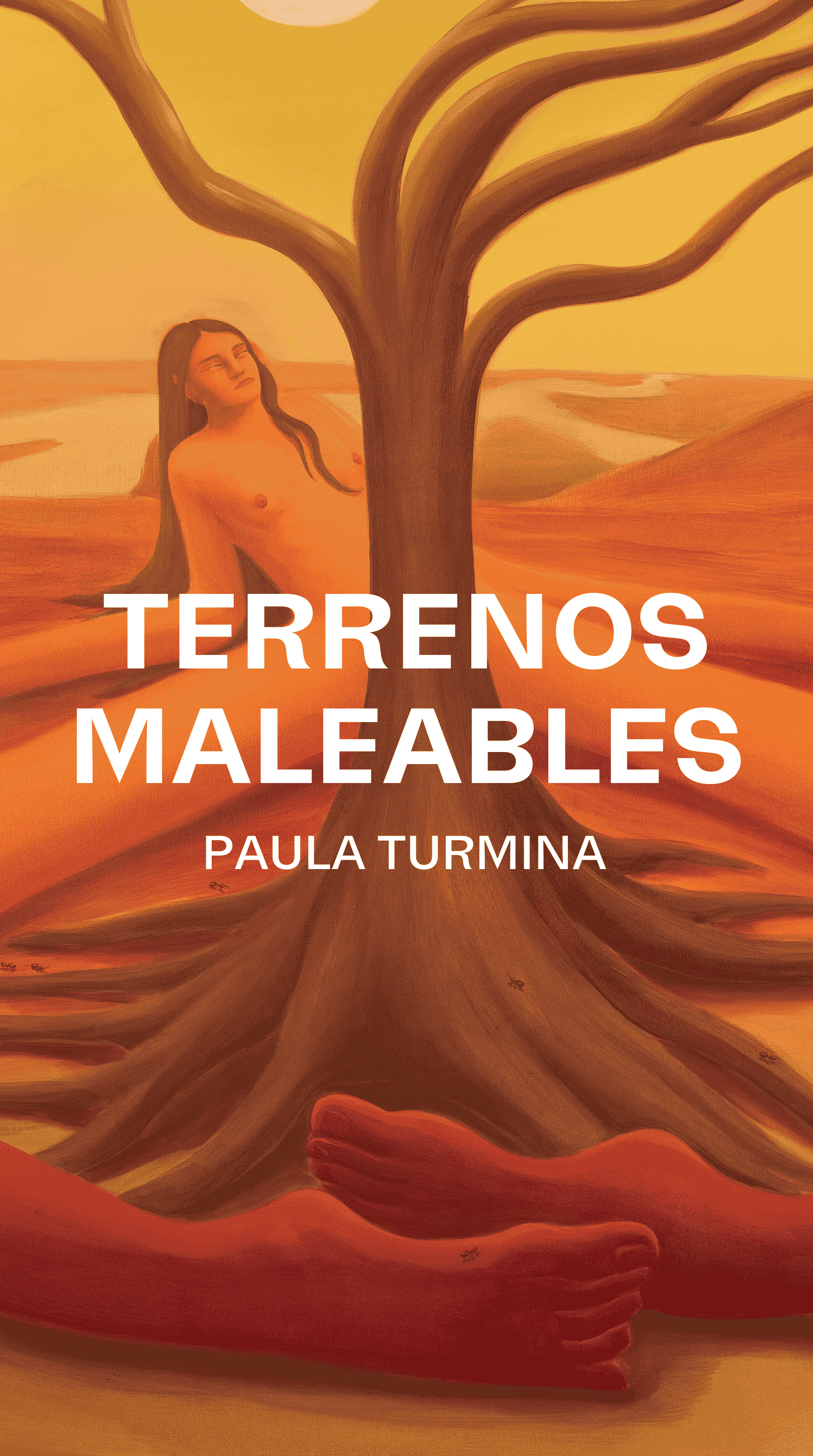
Unsettling and mesmerizing landscapes that seem familiar yet at times otherworldly envelop one’s body through a play with scale, a multiplicity of thin layers, and a series of symbiotic dynamics. Ambiguous and fluid, like the genderless figures or elongated representations of autonomous body parts within them, Paula Turmina’s (Brazil, 1991) paintings lean towards transportive experiences of and with the landscape by evoking bodily connections to the same. Bodies become part of their environment by mimicking the world around them and vice versa —a head a mountain, a set of legs a valley— with anatomies blending together.
Rooted, expanding, and metaphorically elastic, the figures within the work morph, meld and propose new possibilities. Limbs and hair imitate natural growth, while other elements sink into the cracked and tremulous terrain around them. Amongst these unfolding scenarios, an almost imperceptible trail of ants act as agents of resistance by uniting surface to underground. From this perspective, engaging with painting as an expanded field and evoking processes of connection and restoration.
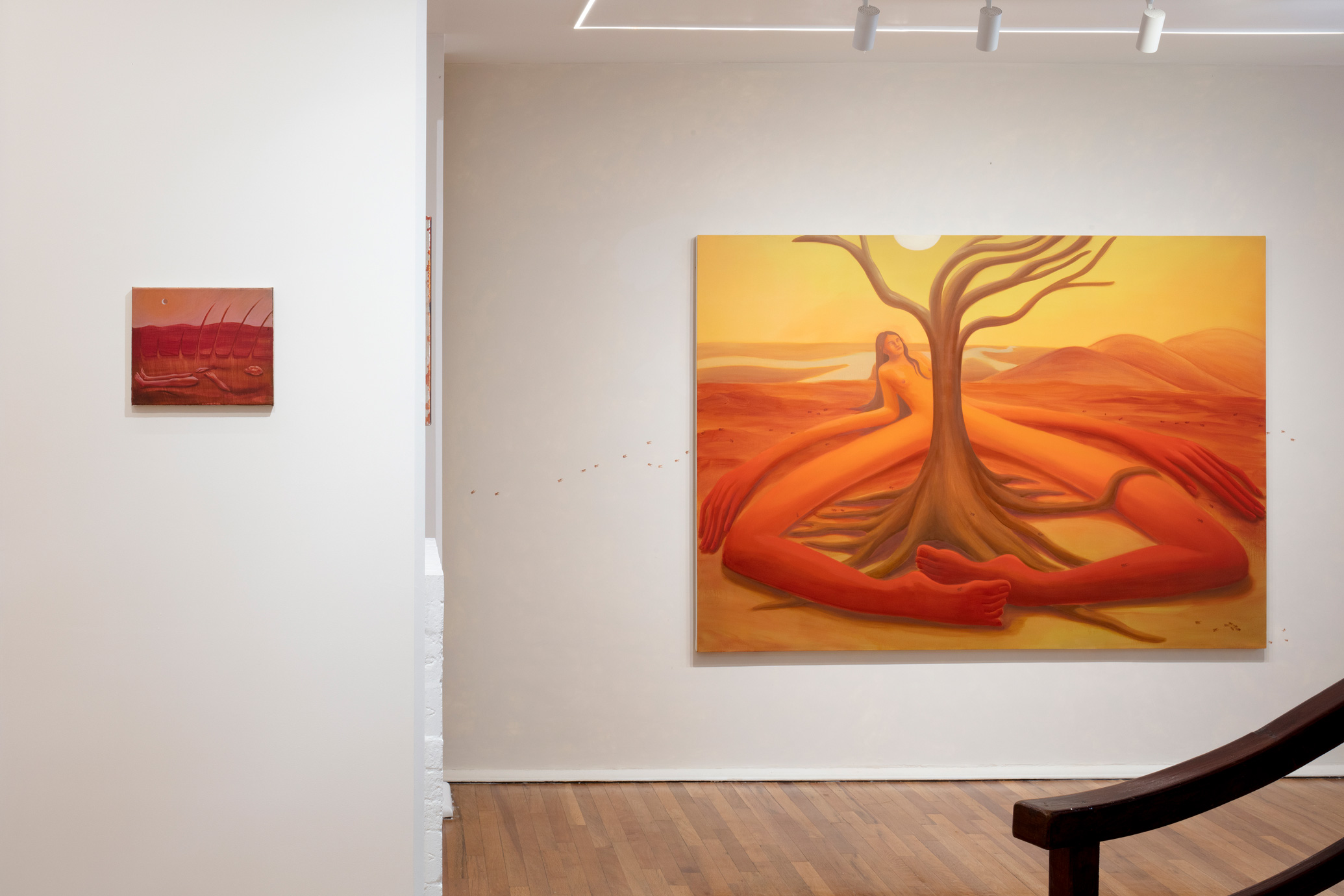
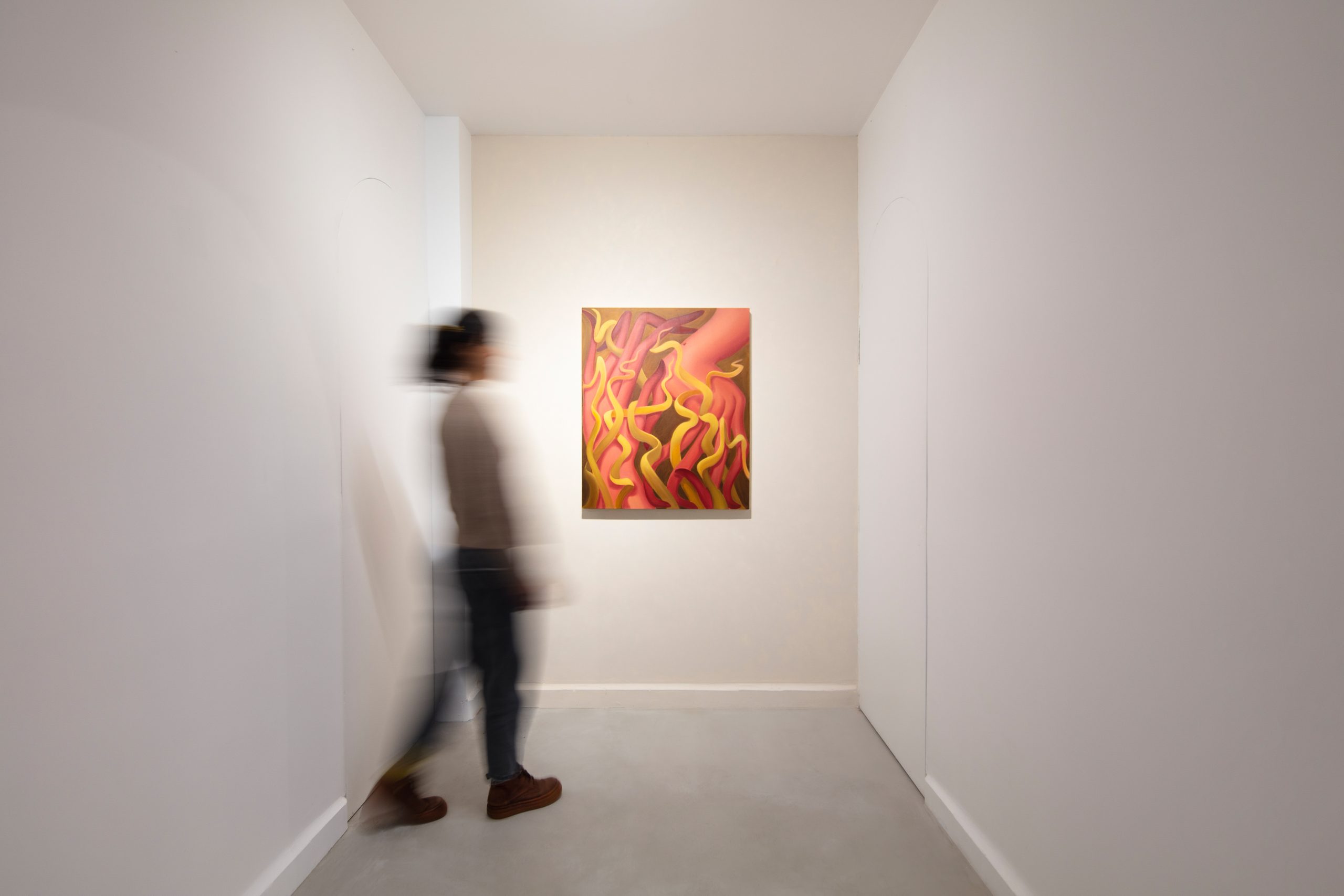
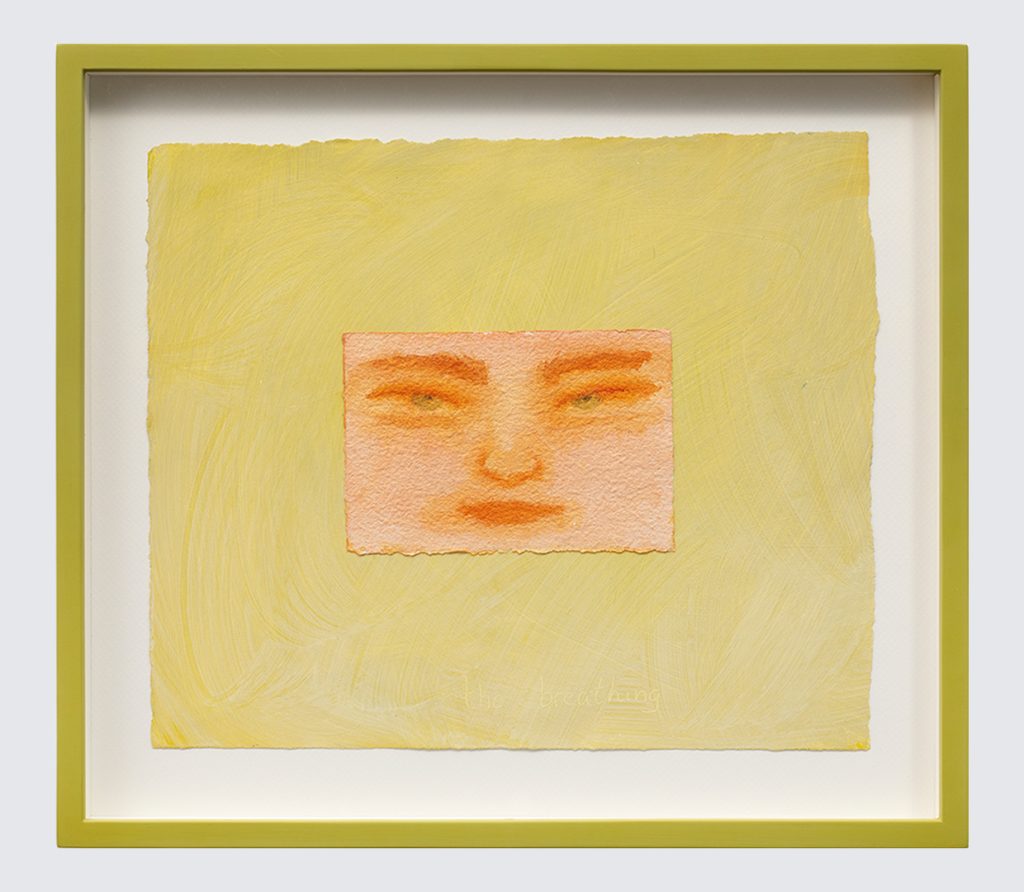
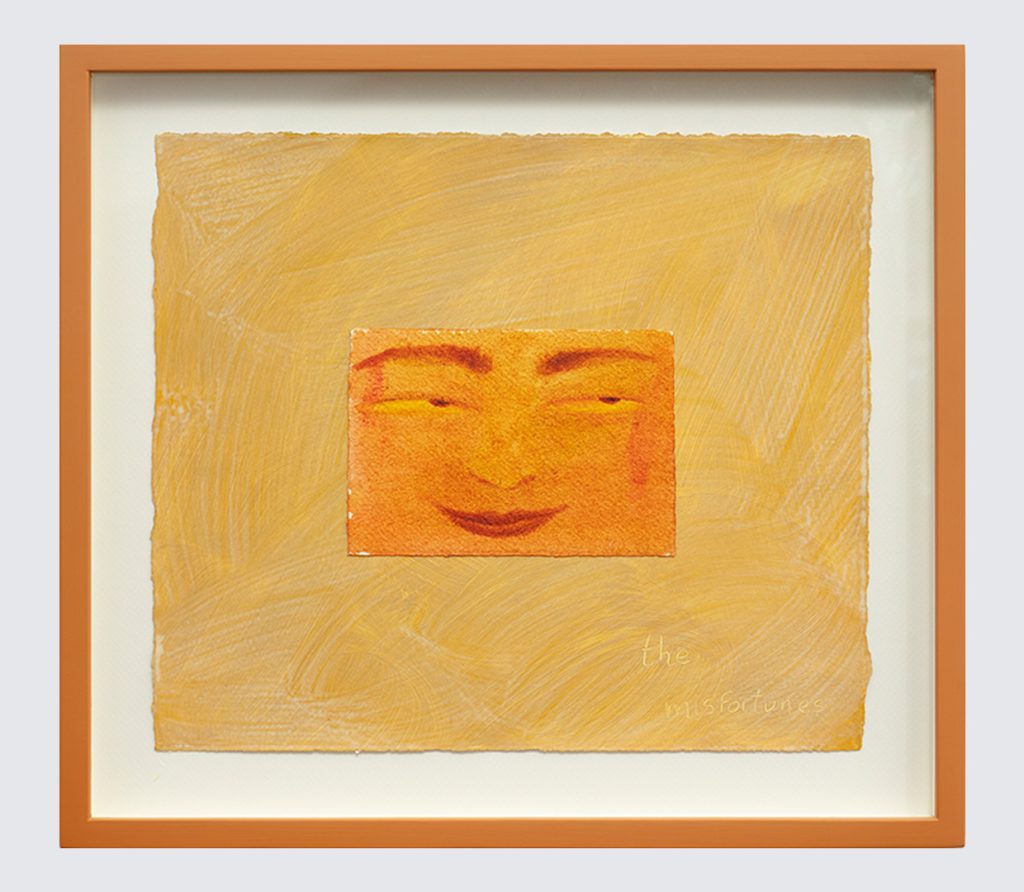
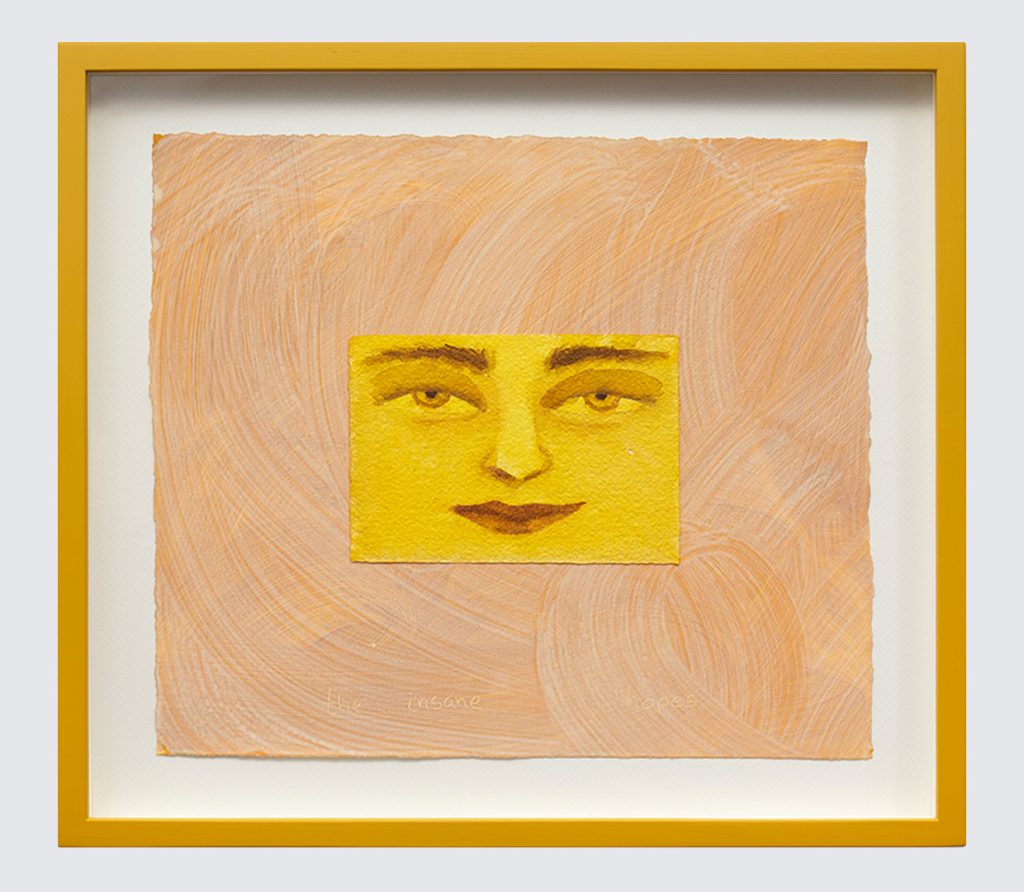
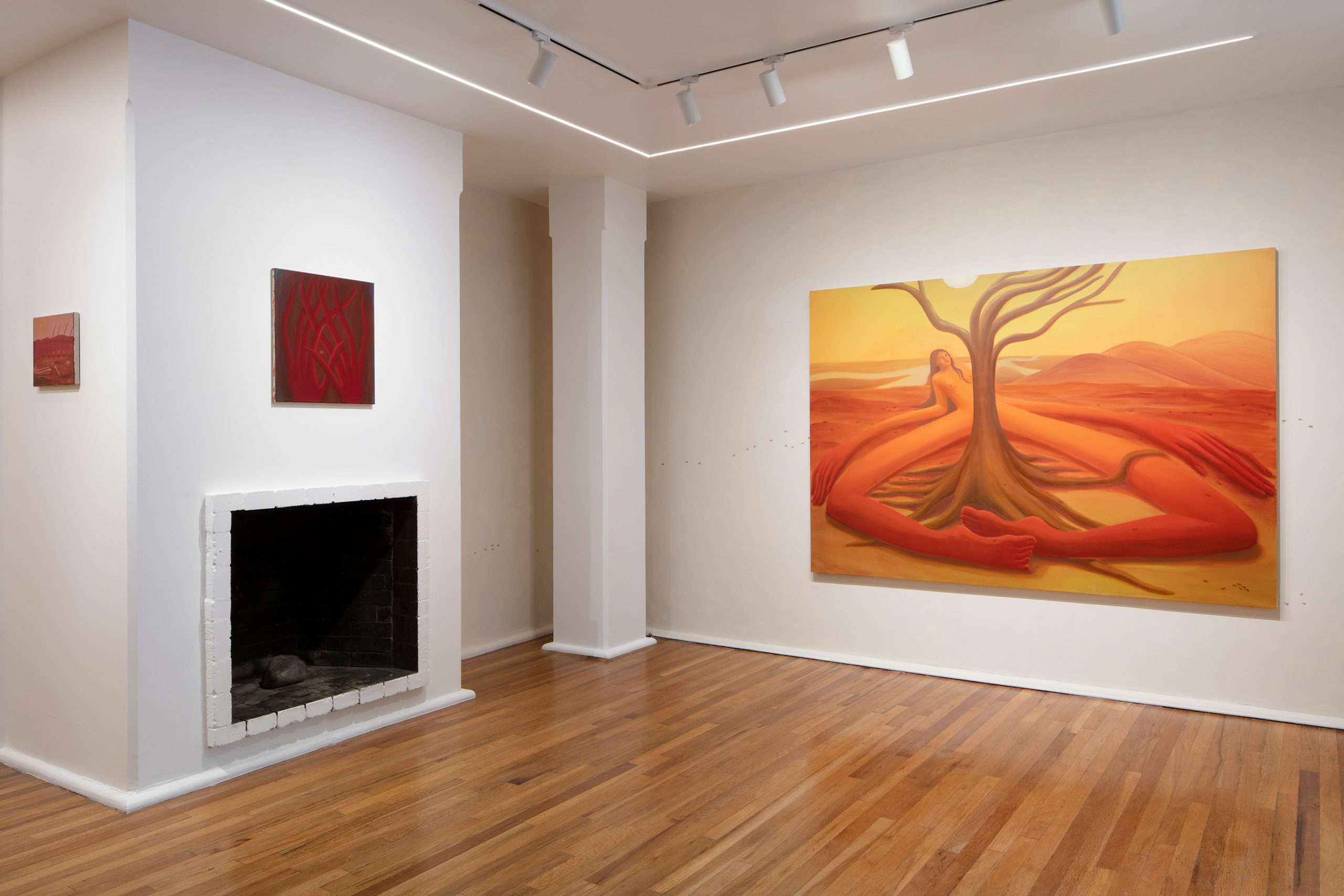
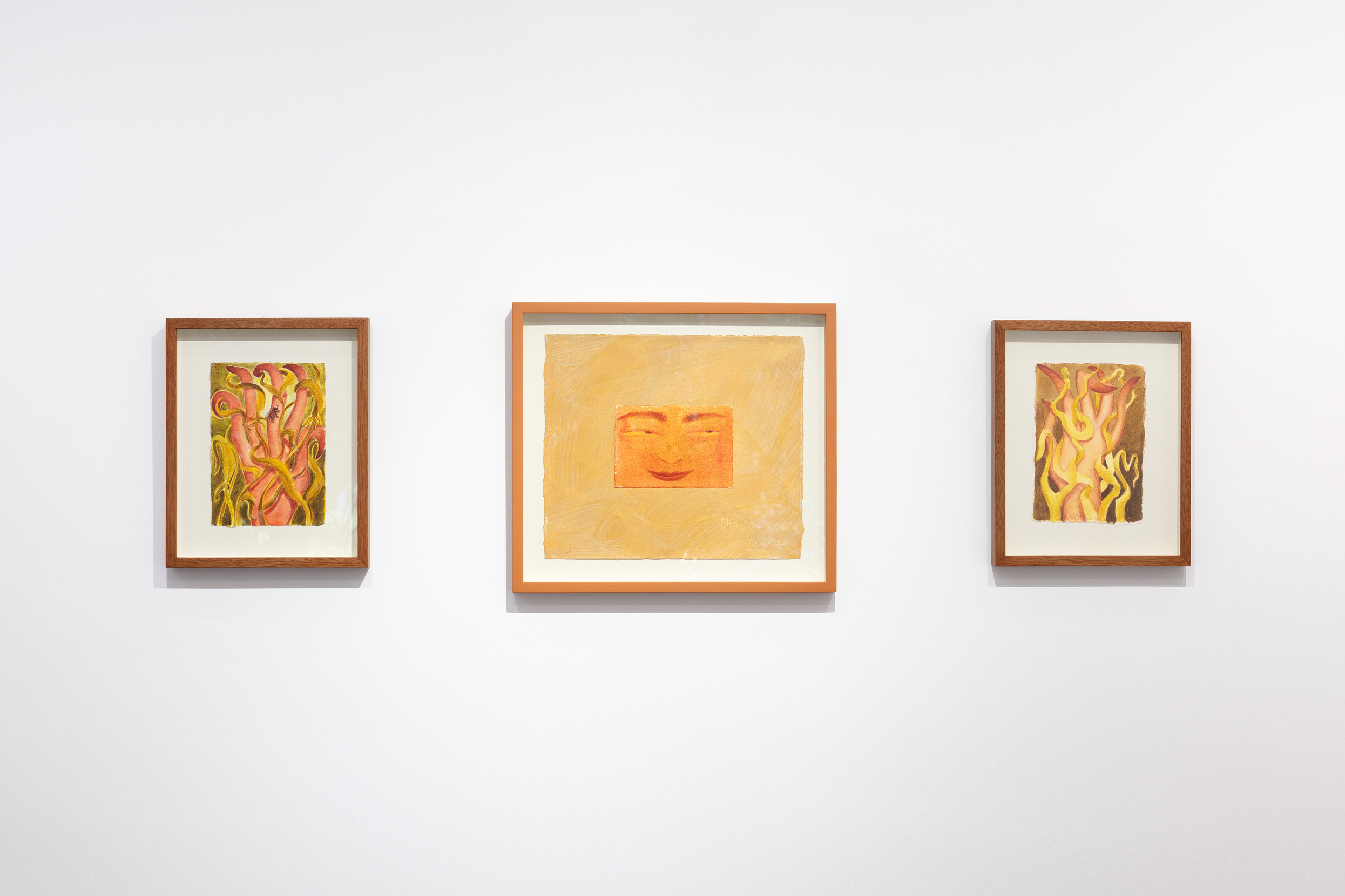
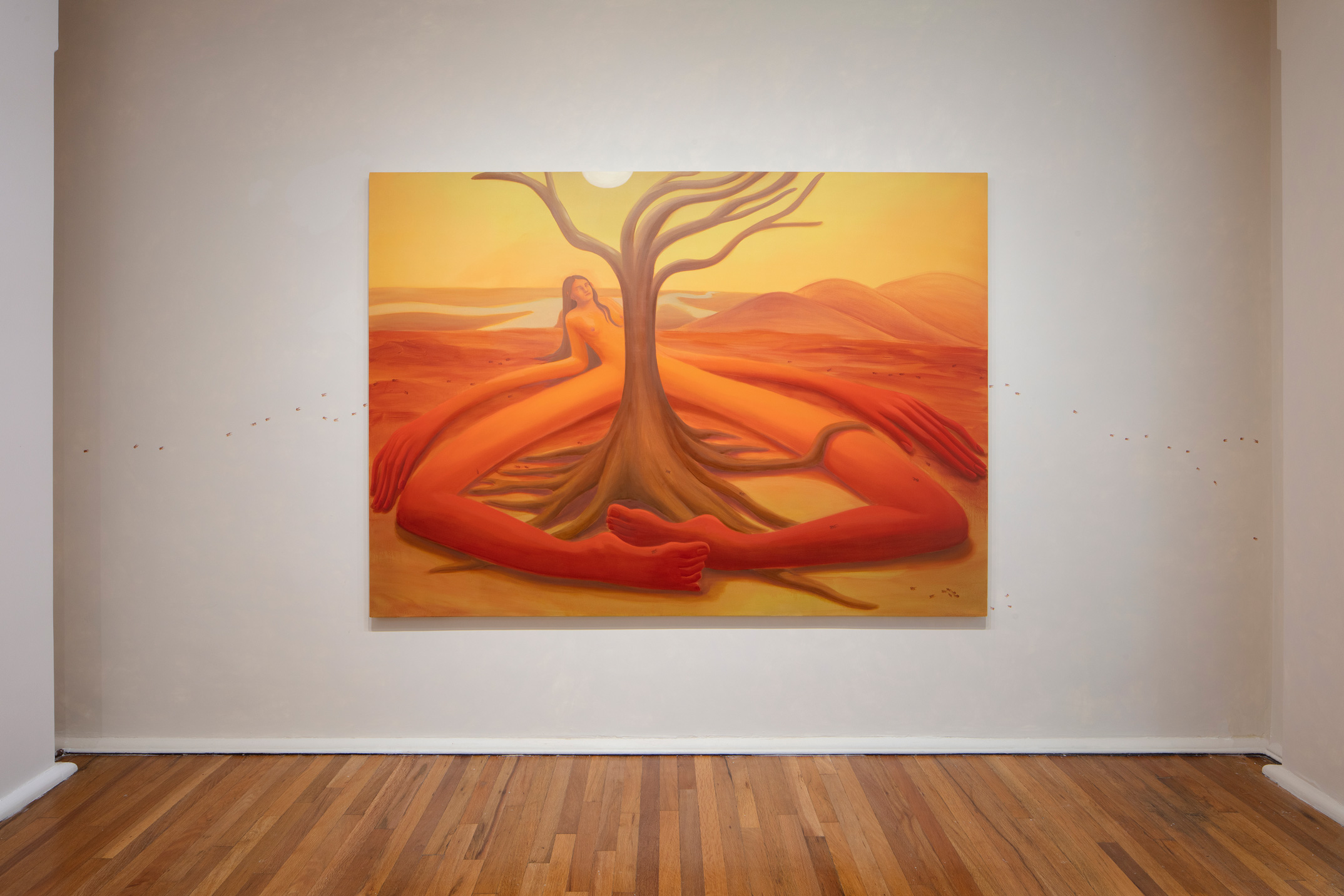
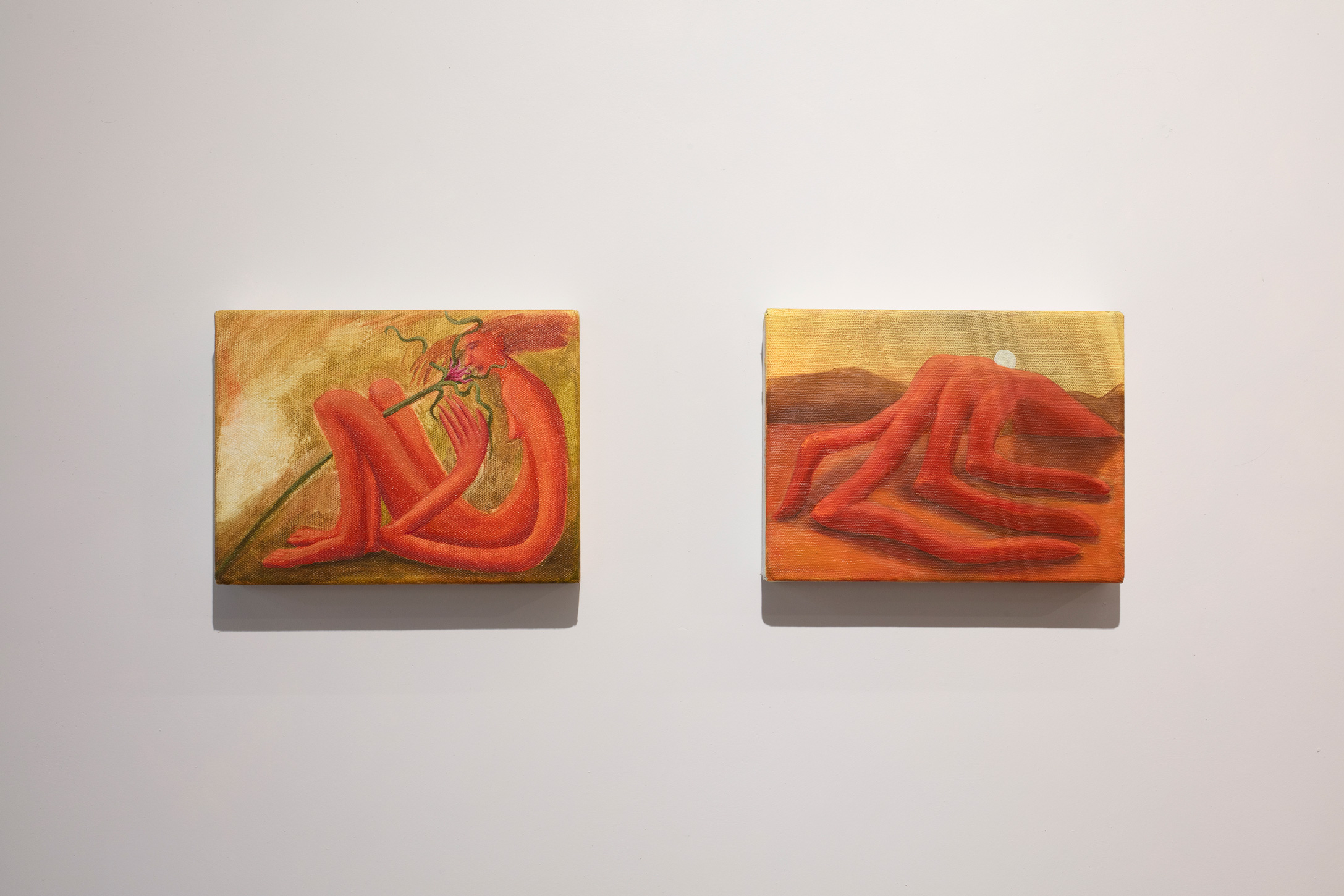
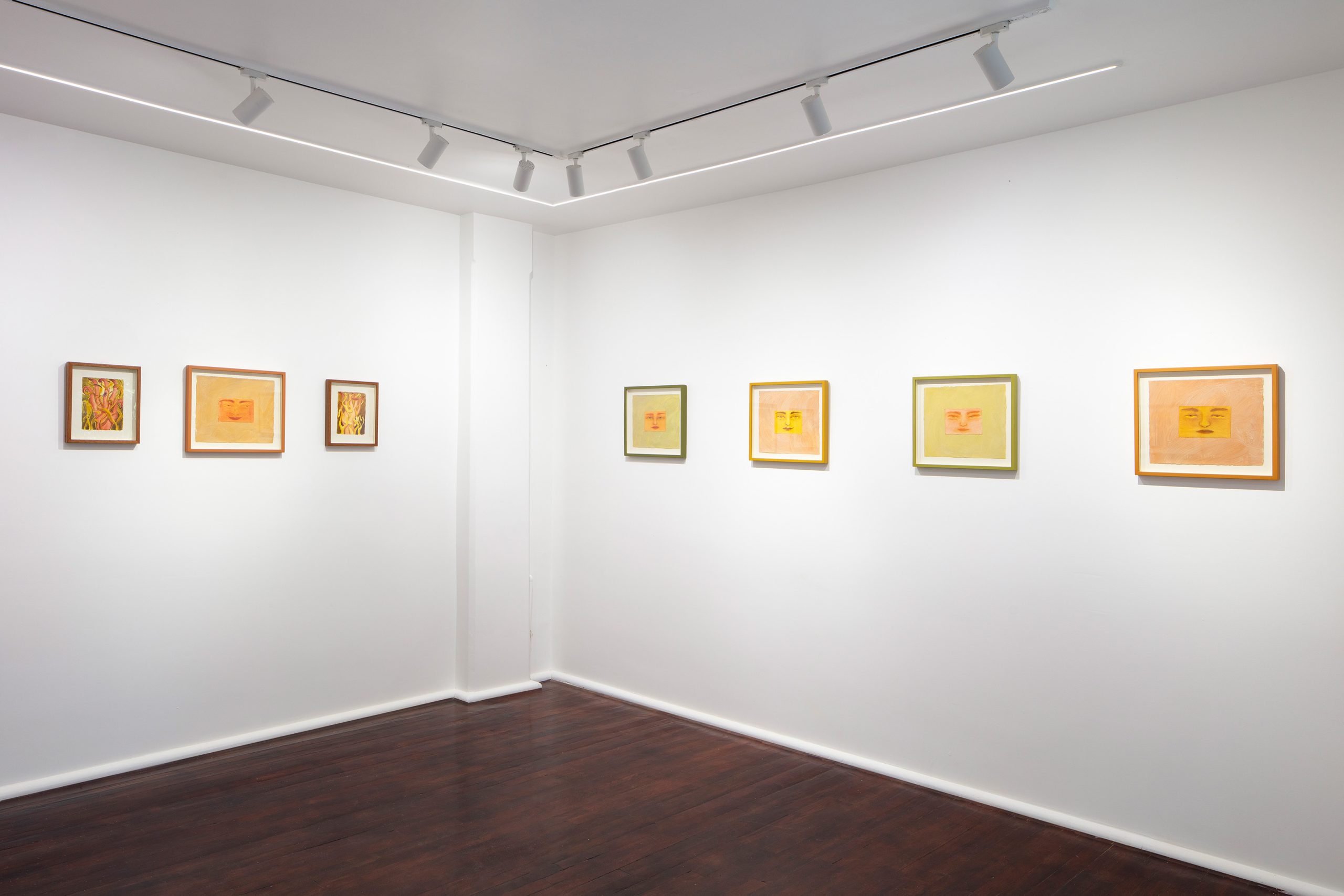
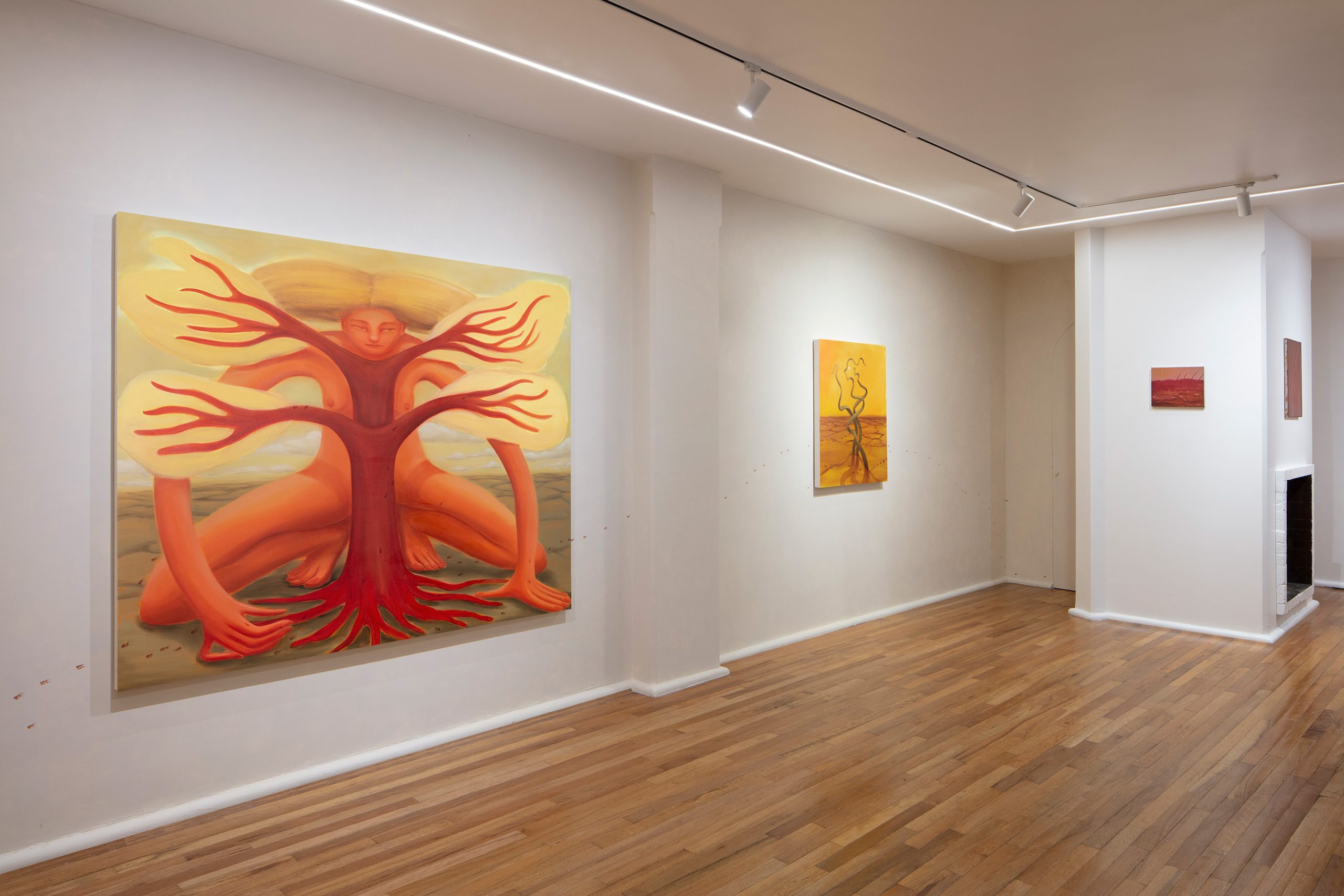
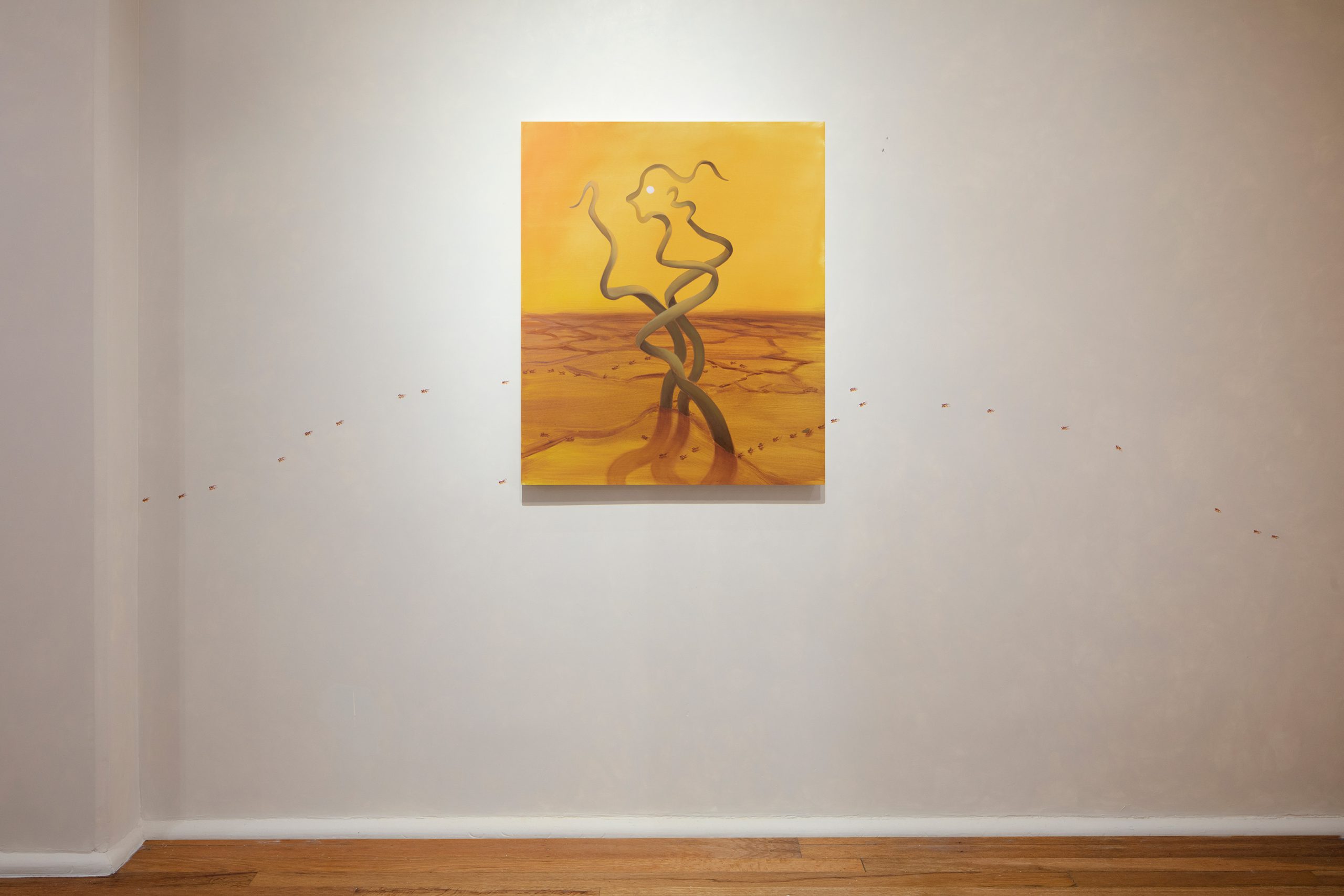

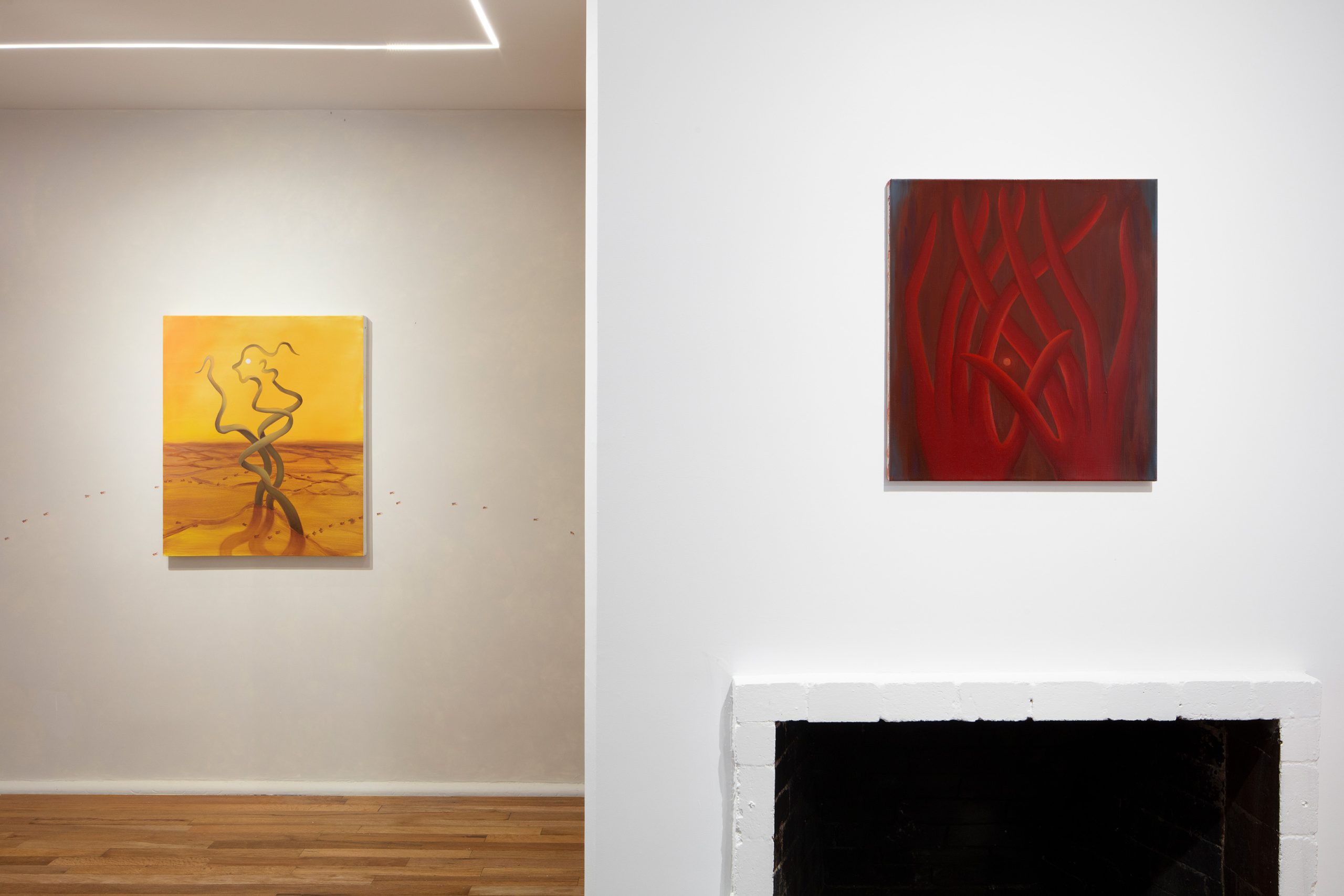
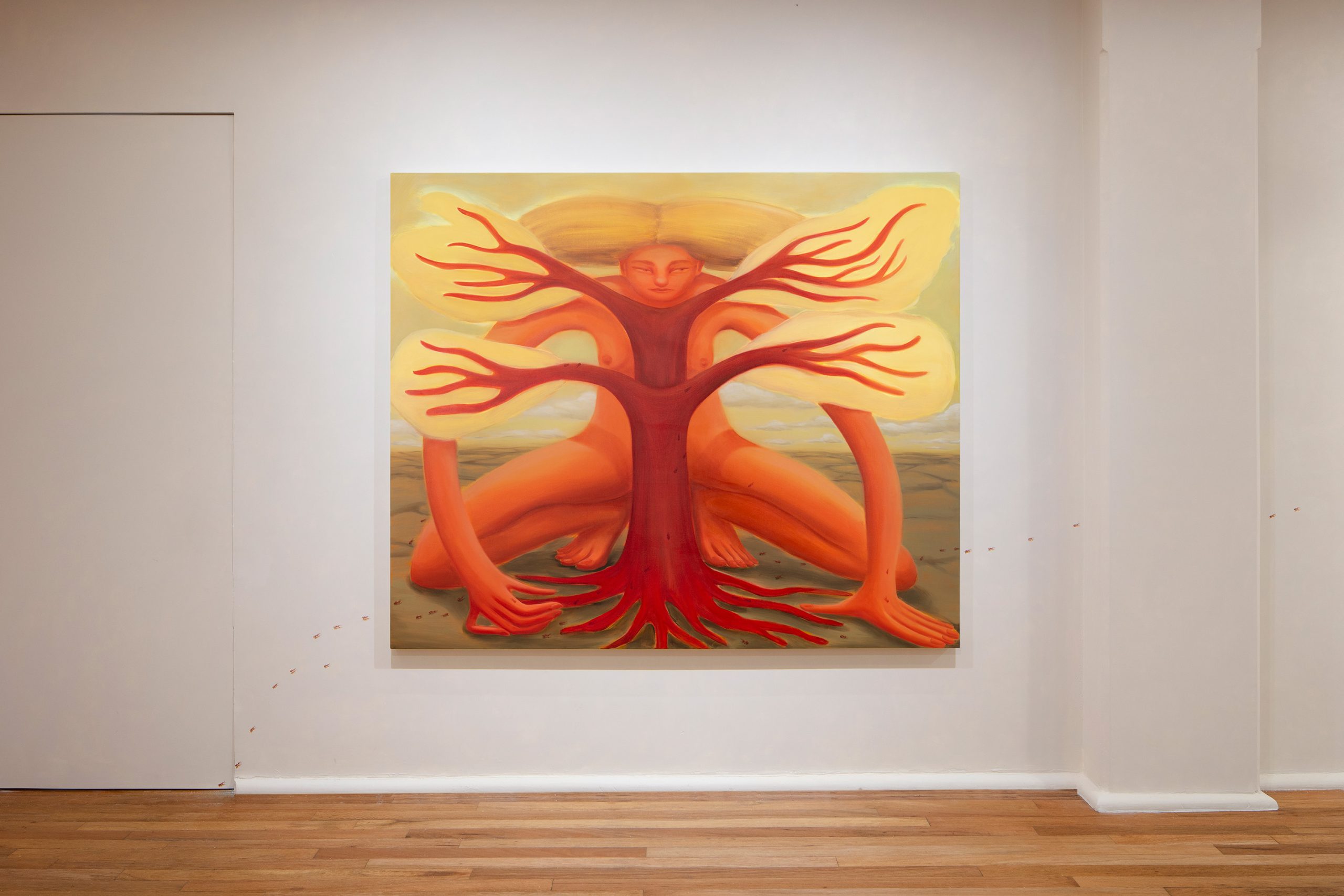
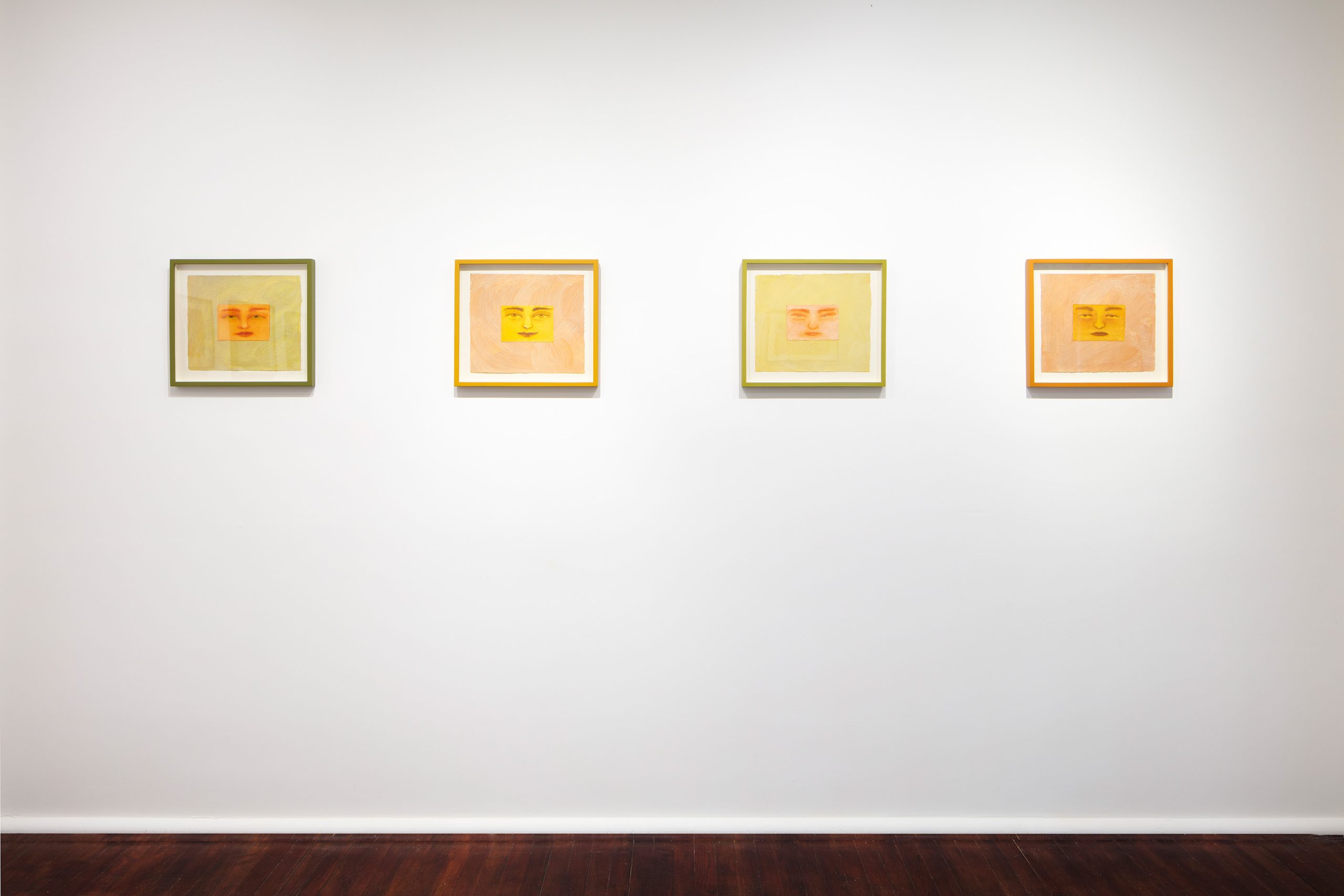
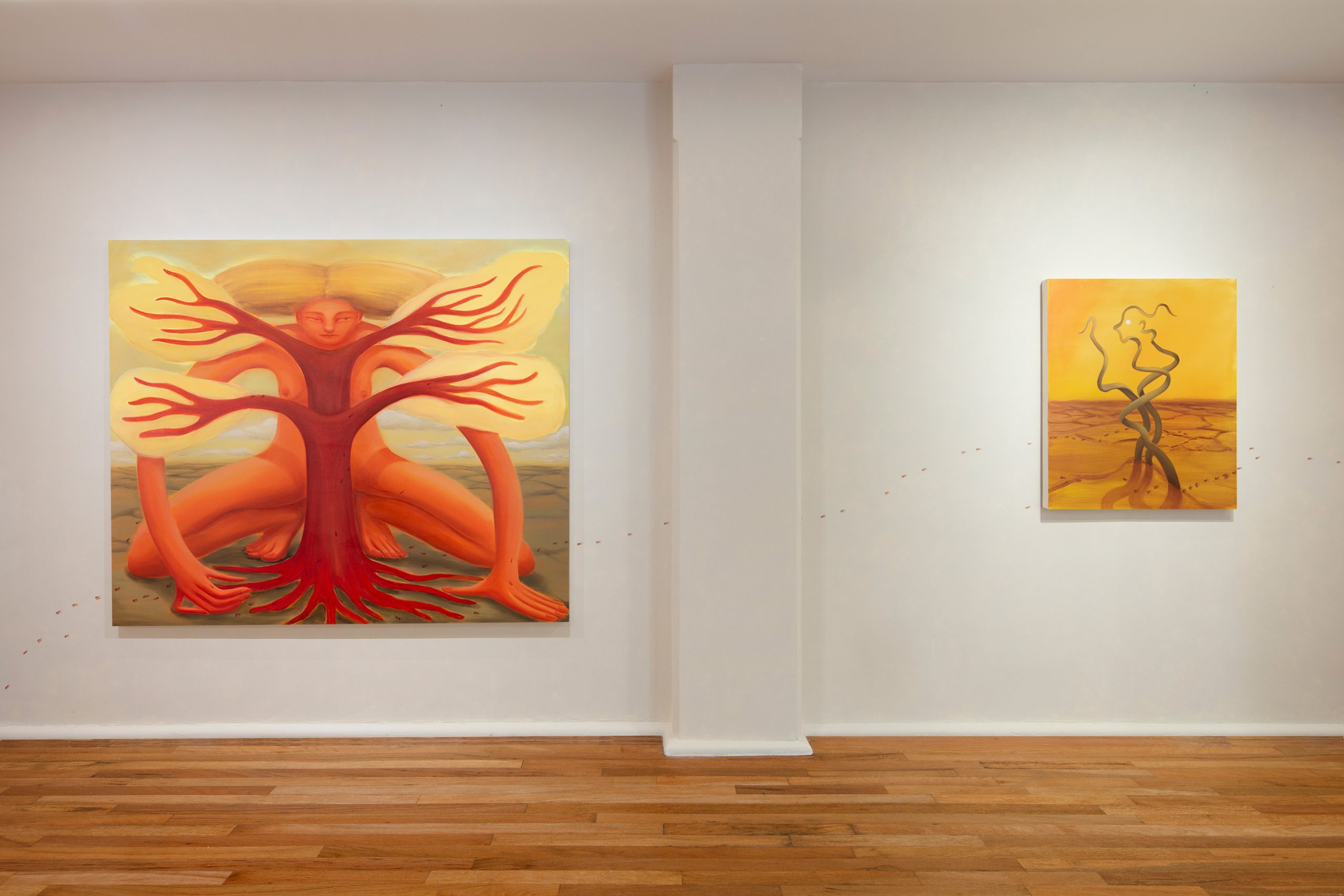
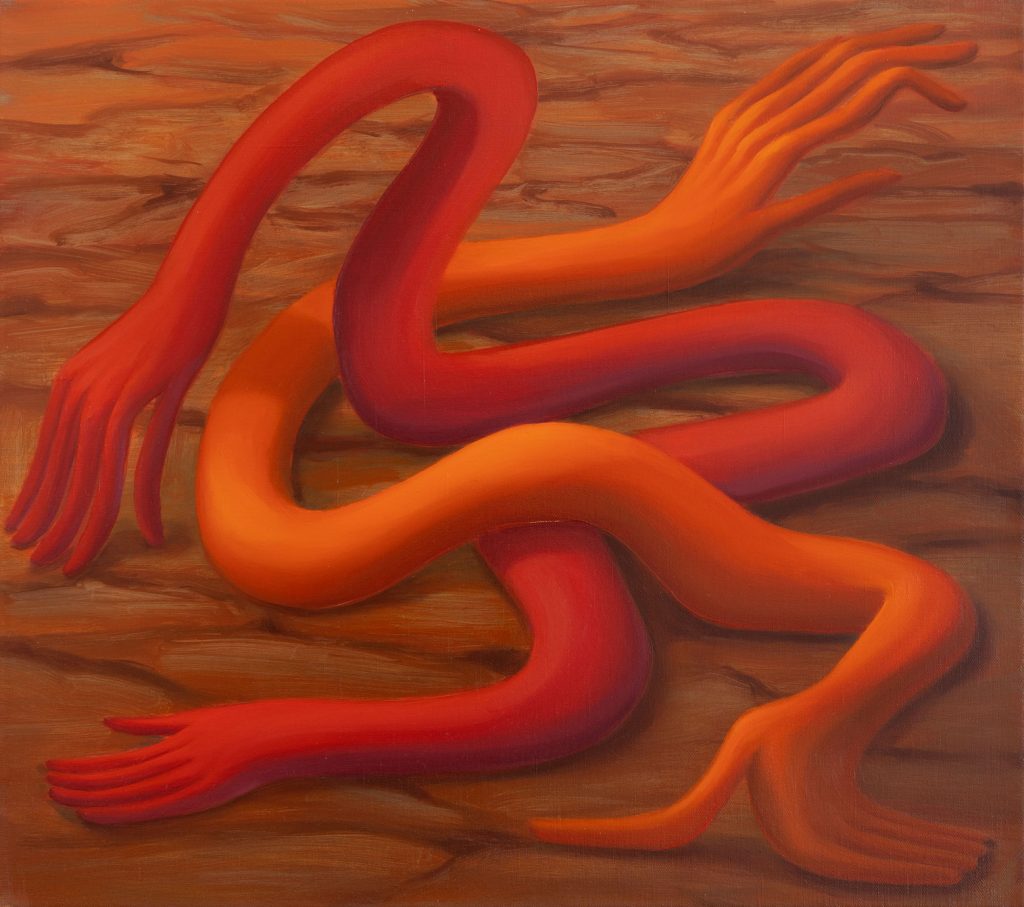
In this sense Complex rhythms, Adaptive processes, Tentacular landscape and Left behind embody the process of feeling to become, with touch foregrounded as the way to perceive and connect with the natural world beyond the constraints imposed by current models of relating. Reflecting upon the legacies that have devastated aspects of our world and approaching the canvas and other surfaces as a space through which she can create transportive, elemental and fictional worlds full of metaphor, allusion and meaning, Turmina brings our attention to scenarios that subvert the human-centric vision that Haraway critiques as essential to the Anthropocene.
Upstairs, a collection of works on paper offer a glimpse into Turmina’s process and mark her first time showing pieces that employ paper as a surface. Full of entangled ideas, theories and experiments, they reflect upon the nets and networks of interconnected explorations that gave form to the paintings on the ground floor. Her series of faces, whose titles offer up interpretations of a myriad of characteristics and events sourced from Glissant’s “One world in relation” (2009), serve as methodical explorations that work against systematic thinking, marking a new direction in Turmina’s work. Studies populate the room that served as her studio throughout her summer residence at Ambar Quijano, providing a journey through the physical, geologic, mental and spiritual ‘trembling’ that allowed Turmina to create works that reimagine what is possible and offer glimpses into becoming emancipated from stagnated ideologies through comprehensive and inventive explorations of a future malleable ground.
Learn more about Paula Turmina: here.
ARTWORKS



